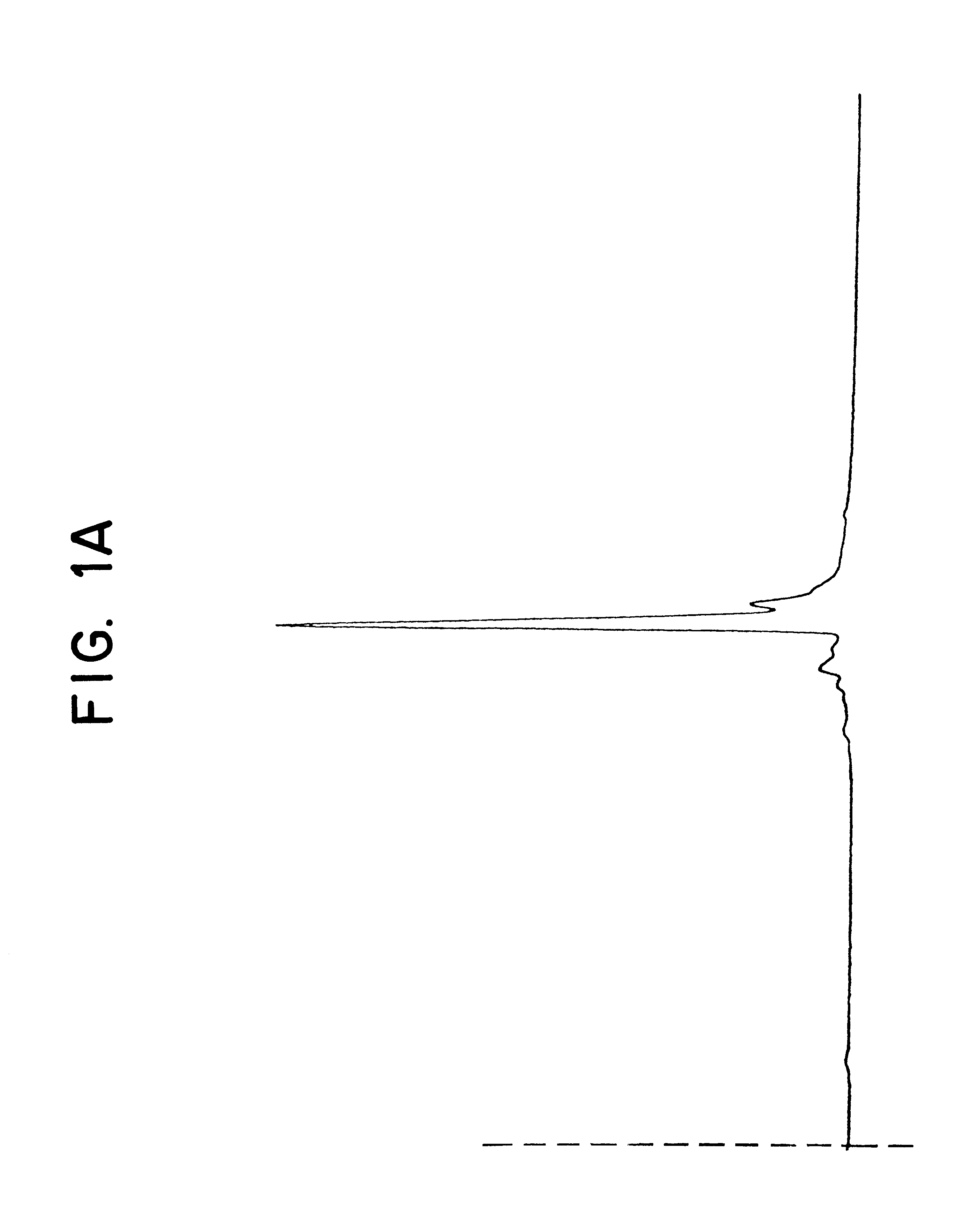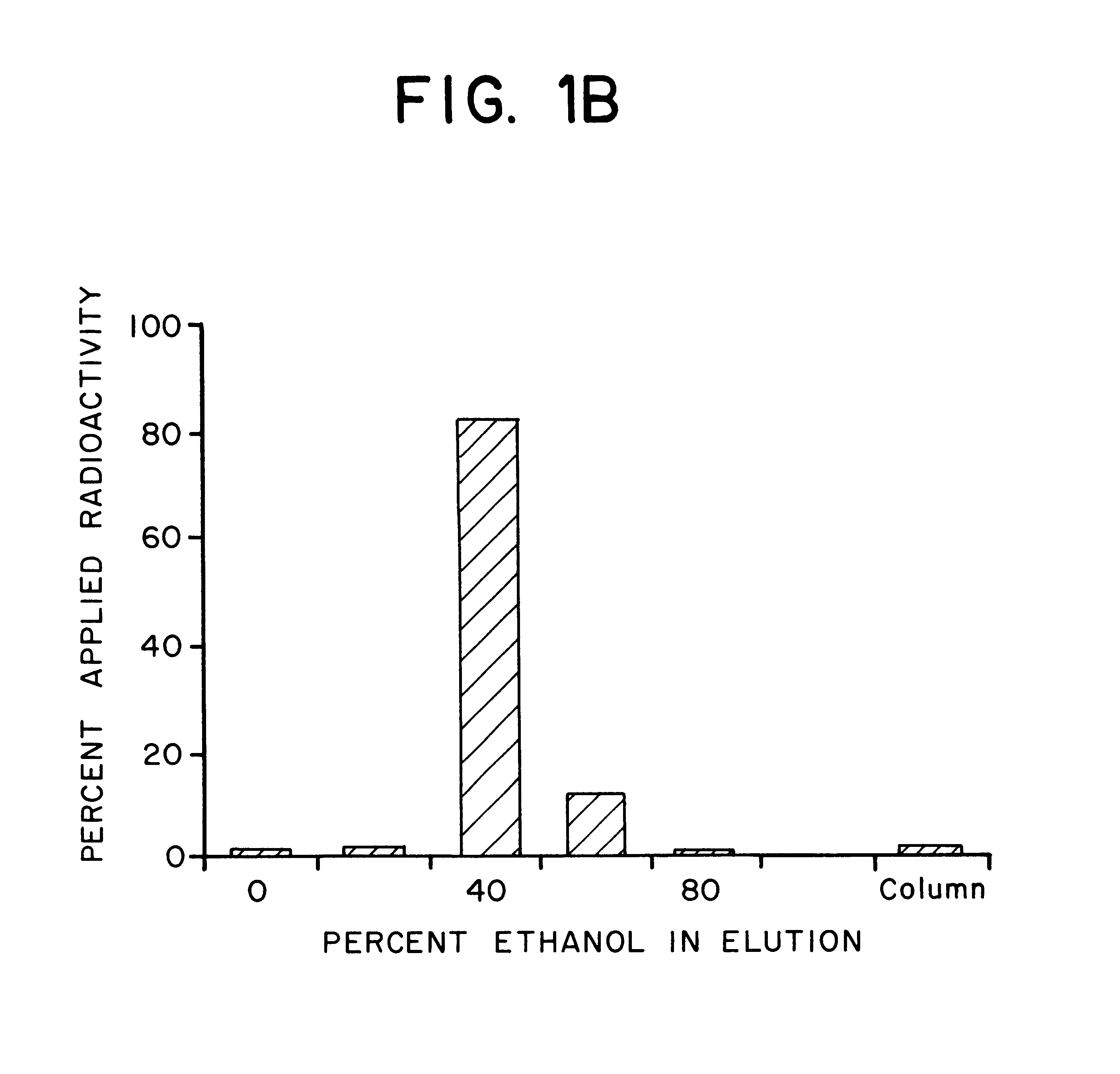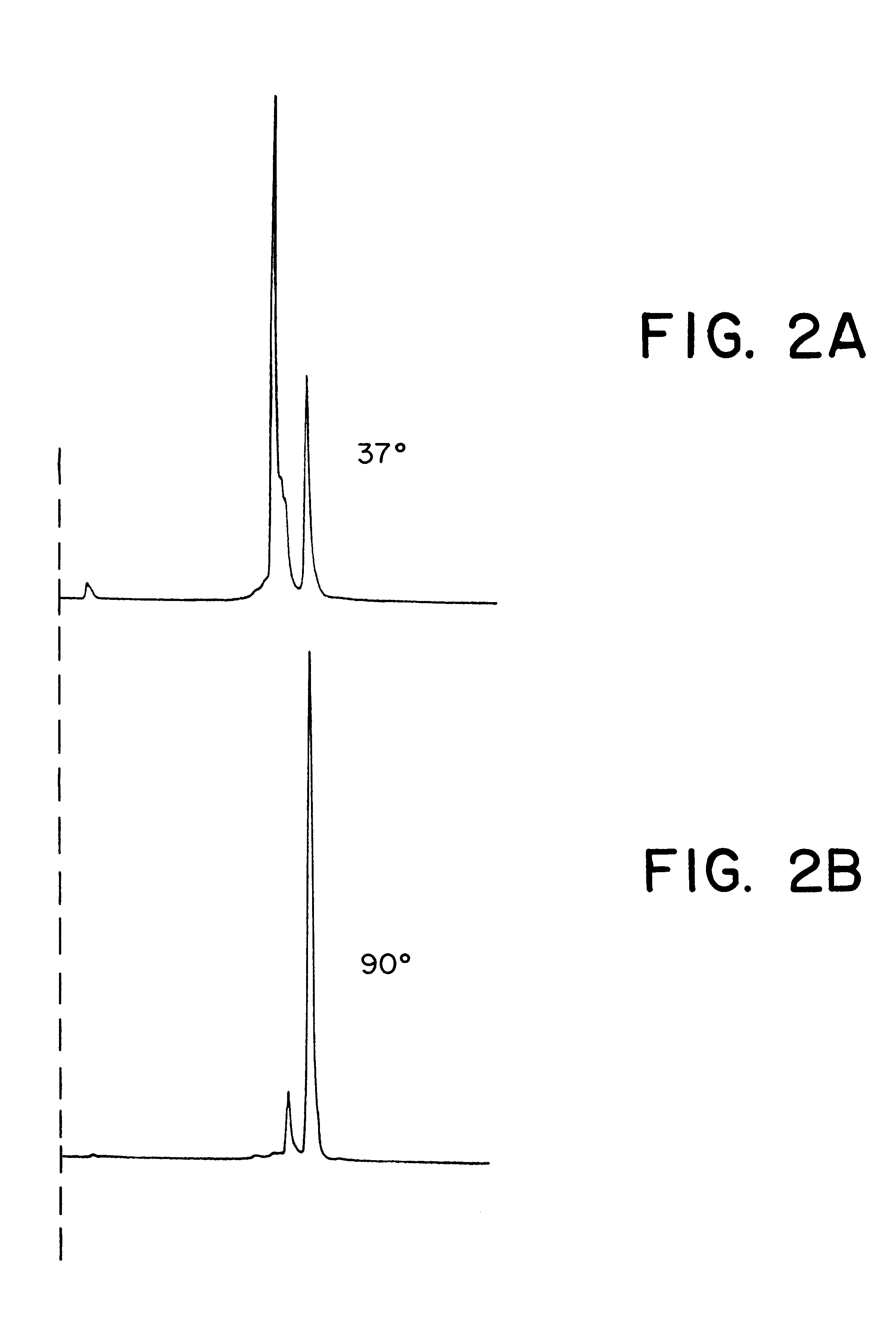Post labeling stabilization of radiolabeled proteins and peptides
a radiolabeled protein and post-labeled technology, applied in the field of post-labeled stabilization of radiolabeled proteins and peptides, can solve the problems of 99m tc, labeled compounds, protein and peptide radiopharmaceutical compositions are known to degrade after radiolabeled, and are particularly susceptible to oxidation loss
- Summary
- Abstract
- Description
- Claims
- Application Information
AI Technical Summary
Benefits of technology
Problems solved by technology
Method used
Image
Examples
example 2
Stabilization of a .sup.99m Tc-labled IgM Antibody for Diagnostic Imaging
Two different lots of radiolabeling kits for an IgM antibody, anti-SSEA-1, were prepared, with each kit containing a lyophilized vial containing:
Two different radiolabeling methods were employed; in the first method, each vial was radiolabeled by the addition of .sup.99m Tc sodium pertechnetate in a volume of 1.0 ml saline, followed by incubation for 30 minutes at 37.degree. C. The radiolabeled antibody was then evaluated. In the second method, each vial was radiolabeled by the addition of .sup.99m Tc sodium pertechnetate in a volume of 0.25 ml saline, incubated for 30 minutes at 37.degree. C., and then 0.75 ml of a 500 mg / 2 ml Ascorbic Acid for Injection, U.S.P., solution was added. The radiolabeled antibody to which the ascorbic acid stabilizing agent had been added was then evaluated. The net immunoreactivity was assessed by measuring binding to cells known to express the antigen for which anti-SSEA-1 is spe...
example 3
Formulation of a .sup.99m Tc-labeled IgM Antibody Radiolabeling Kit for Diagnostic Imaging.
A radiolabeling kit was formulated which included a 3 ml reaction vial containing the following lyophilized components:
The formulation pH is adjusted to 6.2.+-.0.1 with NaOH and / or HCl prior to dispensing 0.50 ml per vial and lyophilizing. The product contains no bacteriostatic preservative. Minimum stannous tin is 10 micrograms and total tin is 24 micrograms. One 2 ml ampule of commercially available Ascorbic Acid Inject ion, U.S.P. (Ascorbic Acid 250 mg / ml and Edetate Disodium 0.025% in water for injection) is included in the radiolabeling kit. Ascorbic Acid solution (0.75 ml) is added after .sup.99m Tc labeling as a stabilizer for the reconstituted product. To radiolabel, the 3 ml reaction vial with lyophilized components is removed from 2-8.degree. C. storage and allowed to come to room temperature. Without the addition of air, the contents of the vial are aseptically reconstituted with up...
example 4
Effect of Post-labeling Ascorbic Acid Stabilization On .sup.99m Tc-labeled IgM Antibody Preparations Containing Varying Stannous Concentrations
Three different anti-SSEA-1 IgM radiolabeling kits were prepared as in Example 3, except that one kit contained a total of 18 g of stannous tartrate, another kit contained a total of 24 g of stannous tartrate, and a third kit contained a total 30 g of stannous tartrate. Each kit was labeled with 20 mCi of .sup.99m Tc sodium pertechnetate in a volume of 250 .mu.l, with incubation for 30 minutes at 37.degree. C. Following incubation, 50 .mu.l of each radiolabeled preparation was removed, to which was added 150 .mu.l of an ascorbic acid solution. Each of the resulting six different preparations was tested for immunoreactivity as described in Example 2. In each case, the negative cell binding was substantially lower in the preparations containing ascorbic acid. At the highest stannous concentration, negative cell binding was 14.5% in the preparat...
PUM
| Property | Measurement | Unit |
|---|---|---|
| concentration | aaaaa | aaaaa |
| concentration | aaaaa | aaaaa |
| concentration | aaaaa | aaaaa |
Abstract
Description
Claims
Application Information
 Login to View More
Login to View More - R&D
- Intellectual Property
- Life Sciences
- Materials
- Tech Scout
- Unparalleled Data Quality
- Higher Quality Content
- 60% Fewer Hallucinations
Browse by: Latest US Patents, China's latest patents, Technical Efficacy Thesaurus, Application Domain, Technology Topic, Popular Technical Reports.
© 2025 PatSnap. All rights reserved.Legal|Privacy policy|Modern Slavery Act Transparency Statement|Sitemap|About US| Contact US: help@patsnap.com



